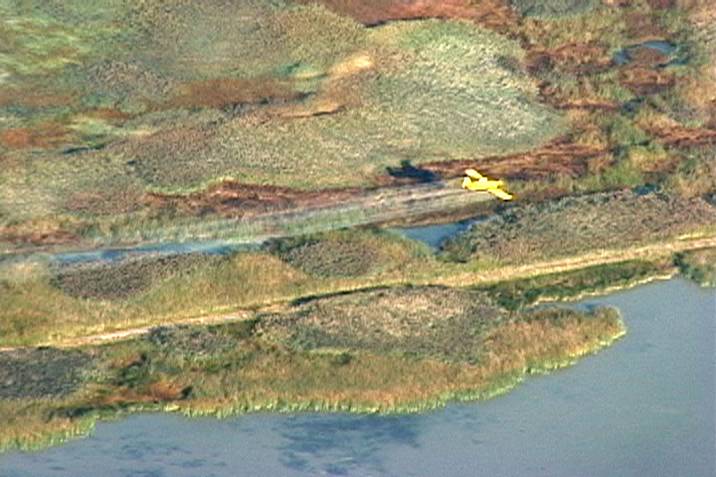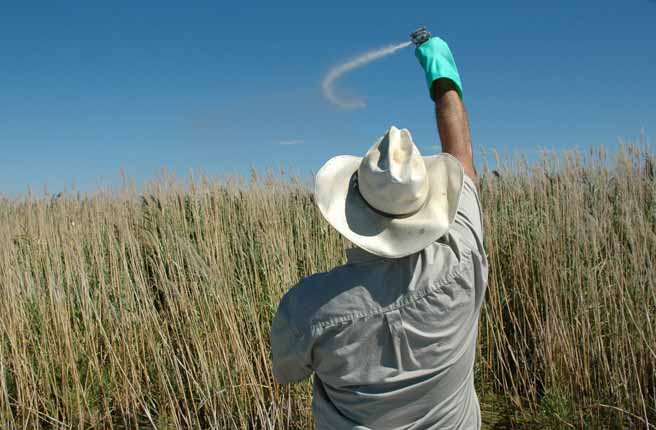Farmington Bay Waterfowl Management Area - Phragmites Control Project
One of the most pressing wetland conservation needs around the Great Salt Lake is the control of widespread infestations of invasive species, particularly common reed (Phragmites australis). Phragmites often has a synergistic relationship with carp and together a compounding negative effect on waterfowl populations and wetland habitat. They degrade wetland habitat needed for both fall migration and spring nesting. They also increase winter survivorship of non-native predators (raccoons and red fox) by Phragmites providing thermal cover and carp providing a nearly unlimited food resource. Further, drawing water levels down to control carp in management units with Phragmites is extremely risky. An incomplete draw down could create optimal germination conditions for Phragmites and the unit could be lost.
 |
| The sprayed areas were burned in the spring of 2007. Photo by UDWR. |
This is the current situation at many managed areas around the Great Salt Lake: decreasing amounts of suitable habitat, presumably increasing predation rates, and an inability to effectively manage water levels. This situation must be reversed. To this end Ducks Unlimited, the Monsanto Company, and the Utah Division of Wildlife Resources (DWR) have partnered together to control Phragmites on the Farmington Bay Waterfowl Management Area. In 2005 and 2006, Monsanto through Ducks Unlimited's partnership with CropLife America donated a total of 320 gallons of AquaMaster⪚ herbicide to control 400 acres of dense, monotypic stands of Phragmites at Farmington Bay WMA.
The project was designed to remove the invasive species benefits to non-native predators, restore and enhance large blocks of wetlands, increase breeding success of waterfowl, and greatly improve fall and spring waterfowl migration conditions through better habitat and increased food resources. Some of the areas sprayed will be restored by the Doug Miller Tribute Project. Major nesting waterfowl species include gadwall, mallard, and tundra swans. Major migrants include pintail, green-winged teal, and wigeon. This project is complimentary to the Utah Divison of Wildlife Resources effort to control Phragmites throughout the Great Salt Lake region.
 |
| Dense stands of Phrag were treated using a variety of methods. Photo by UDWR. |
CropLife
Ducks Unlimited uses cookies to enhance your browsing experience, optimize site functionality, analyze traffic, and deliver personalized advertising through third parties. By continuing to use this site, you agree to our use of cookies. View Privacy Policy